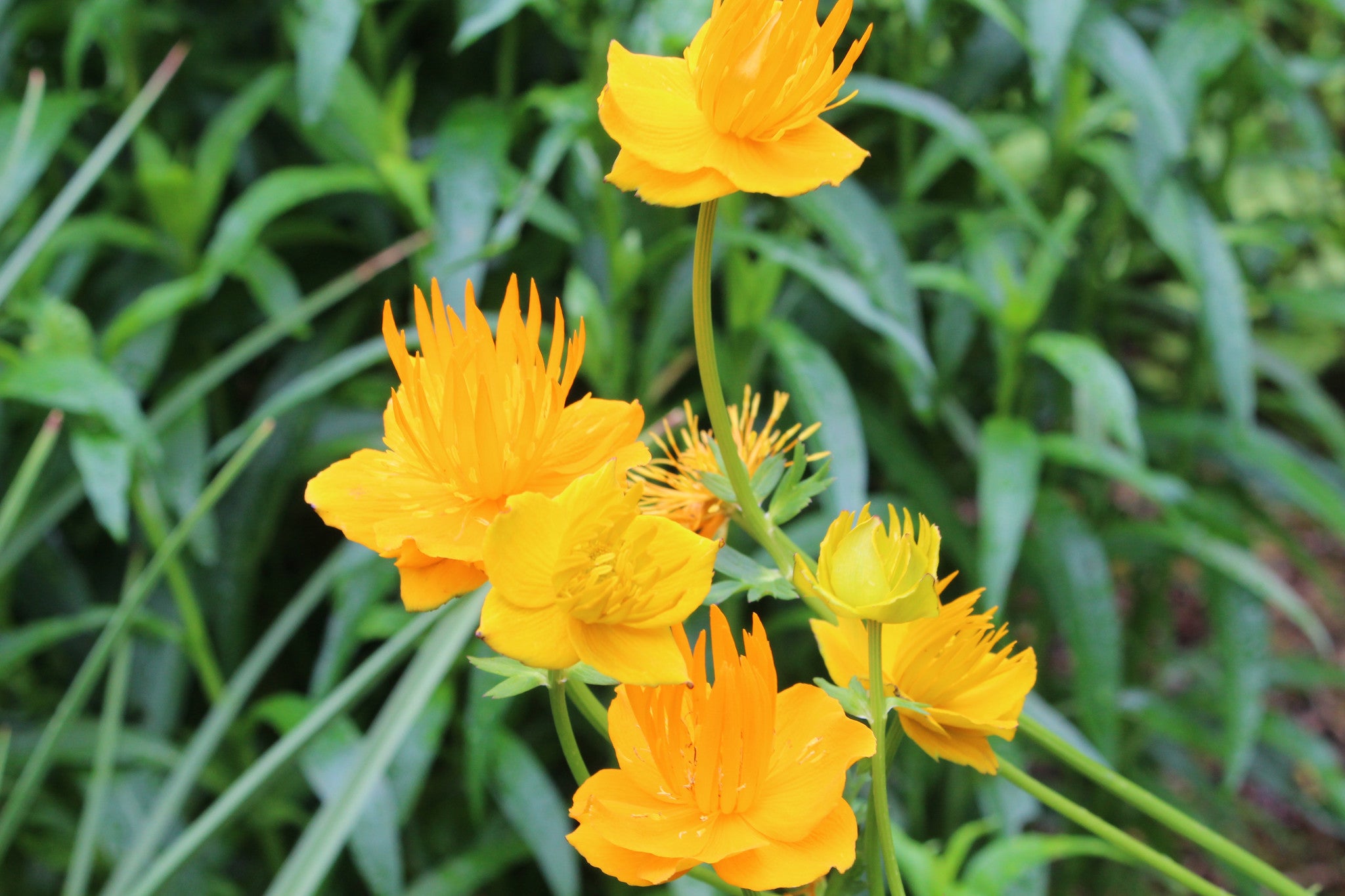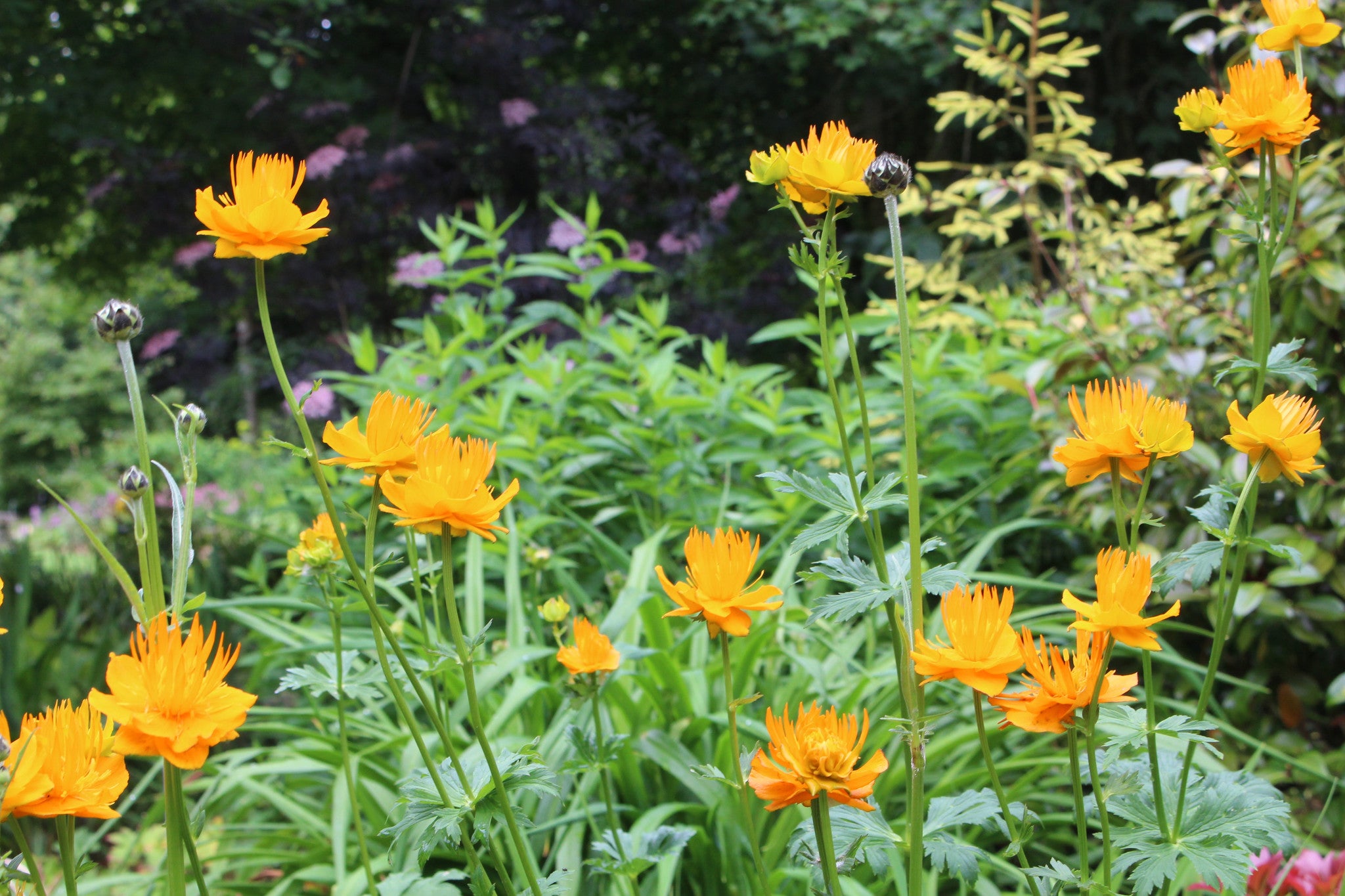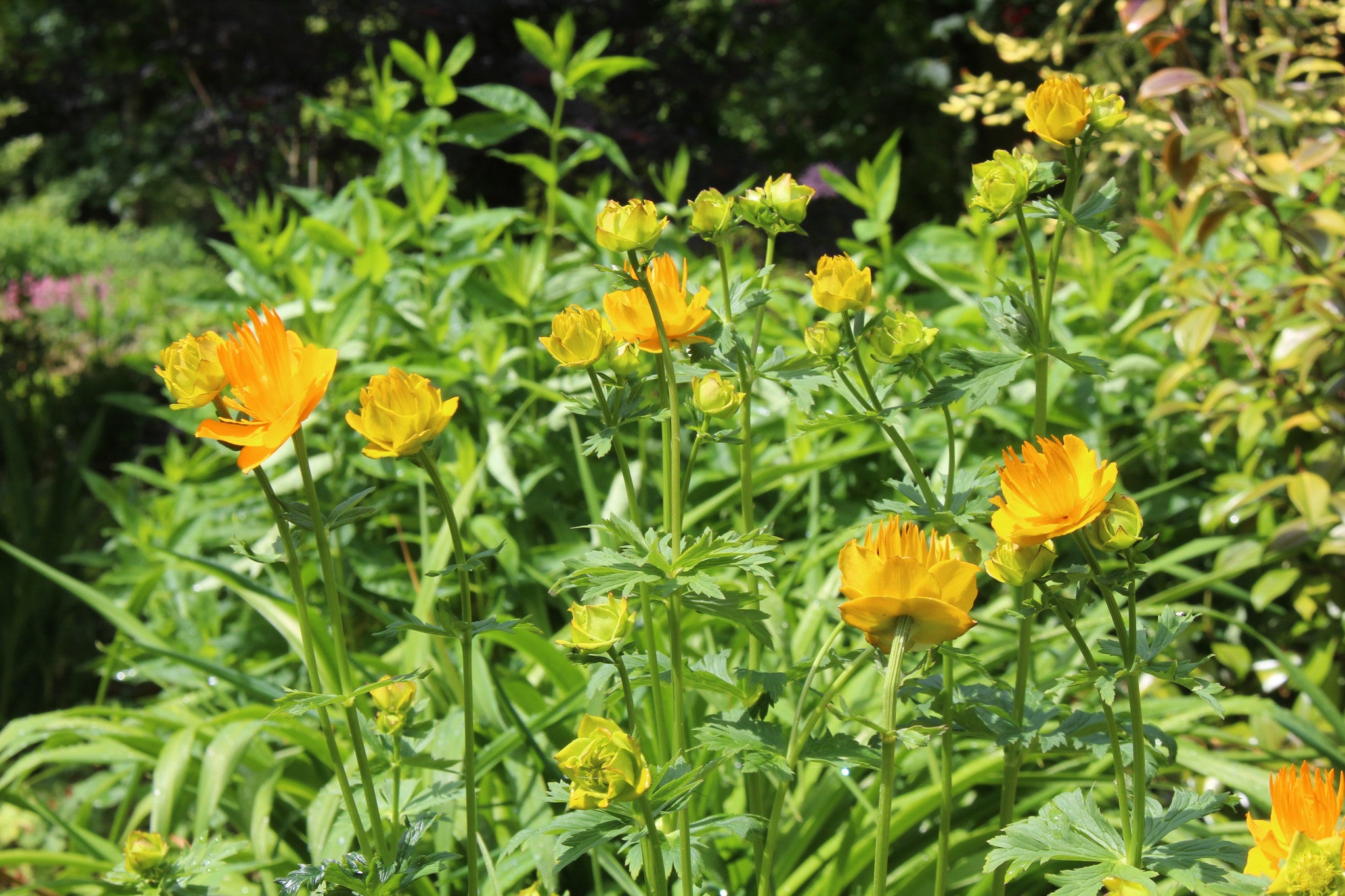Trollius chinensis 'Golden Queen'
Approx. 0.5 litre pot
About this cultivar:
Trollius chinensis 'Golden Queen' is thought by some to have came from a hybrid between the late blooming T. chinensis and the taller T. lebouri. However the RHS list it as a straight chinensis cultivar. They are usually right. Gardening knowledge is mostly Chinese whispers I fear. Whisperus chinensis? (Actually, ahem, it would be Susurri chinensis if you know your latin).
In any case this plant is golden orange, quite tall, and regal. Great!
- Position: Full sun, partial shade
- Soil: Almost any soil, grows well in Ballyrobert
- Flowers: April, May, June, July, August
- Other features: Grows well in Ballyrobert
- Hardiness: Fully hardy, grows well in Ballyrobert
- Habit: Clump forming
- Foliage: Deciduous
- Height: 60 - 90 cm (2 - 3 ft)
- Spread: 45 - 75 cm (1.5 - 2.5 ft)
- Time to full growth: 2 to 5 years
- Plant type: Herbaceous Perennial
- Colour: Green, orange
- Goes well with: --
About this genus:
Trollius (trol-le-us) gets its name from a the German Swiss vernacular (trol means globe in German). It is a genus of about 30 species of plants in the butter-cup family (Ranunculaceae). The common name of some species is globeflower or globe flower. Native to the cool temperate regions of the Northern Hemisphere, with the greatest diversity of species in Asia, Trollius usually grow in heavy, wet clay soils.
They are mostly herbaceous perennials, produce numerous fibrous roots, with bright yellow flowers, though some have orange to lilac coloured flowers. The name globe flower refers to the petals of T. europaeus and T. × cultorum which are curved over the top of the flower, forming a globe. But some species have flatter or fully open flowers.
Most Trollius cultivars available were raised during the first half of the 20th century, some in Holland, others by the distinguished plant breeders Maurice Prichard and Amos Perry. The RHS held a trollius trial at Wisley between 1928 and 1930: many cultivars are still around today.
A sterling addition to bouquets, the Buttercup-like blossoms perch on straight stems above handsome, deeply divided glossy leaves and promise a long summer fling with regular deadheading.
Trollius are a pleasure and a pain for us here!
A pleasure because the cultivars we have trialled are almost the best plants in our garden - lots and lots and lots and lots of bright yellow and orange flowers, always with a second summer flush, thriving in clay soil. Amazing.
Then they are a pain, this is because we have customers who have seen-on-tv or read-in-a-book about some awful cultivars - I'm talking about you 'Cheddar' and 'Alabaster'. Those customers came down here convinced by the media these awful cultivars were great plants. We trailed them - nice colour, but they only provided 20% of the number of flowers of the others, with no second flush. We sold them for a while- with that caveat- such was the demand by regulars. But now we don't any more. I actually feel guilty for even selling them for a couple of years.
Moisture-loving Astilbes, Primulas, Ligularias, Lythrums, Geums and Rodgersias all work well with Trollius.








